This post may contain affiliate links. Read our disclosure policy.
If you’ve been following me for a while, you’ve probably seen me talk about the correct way to measure flour at one time or another.
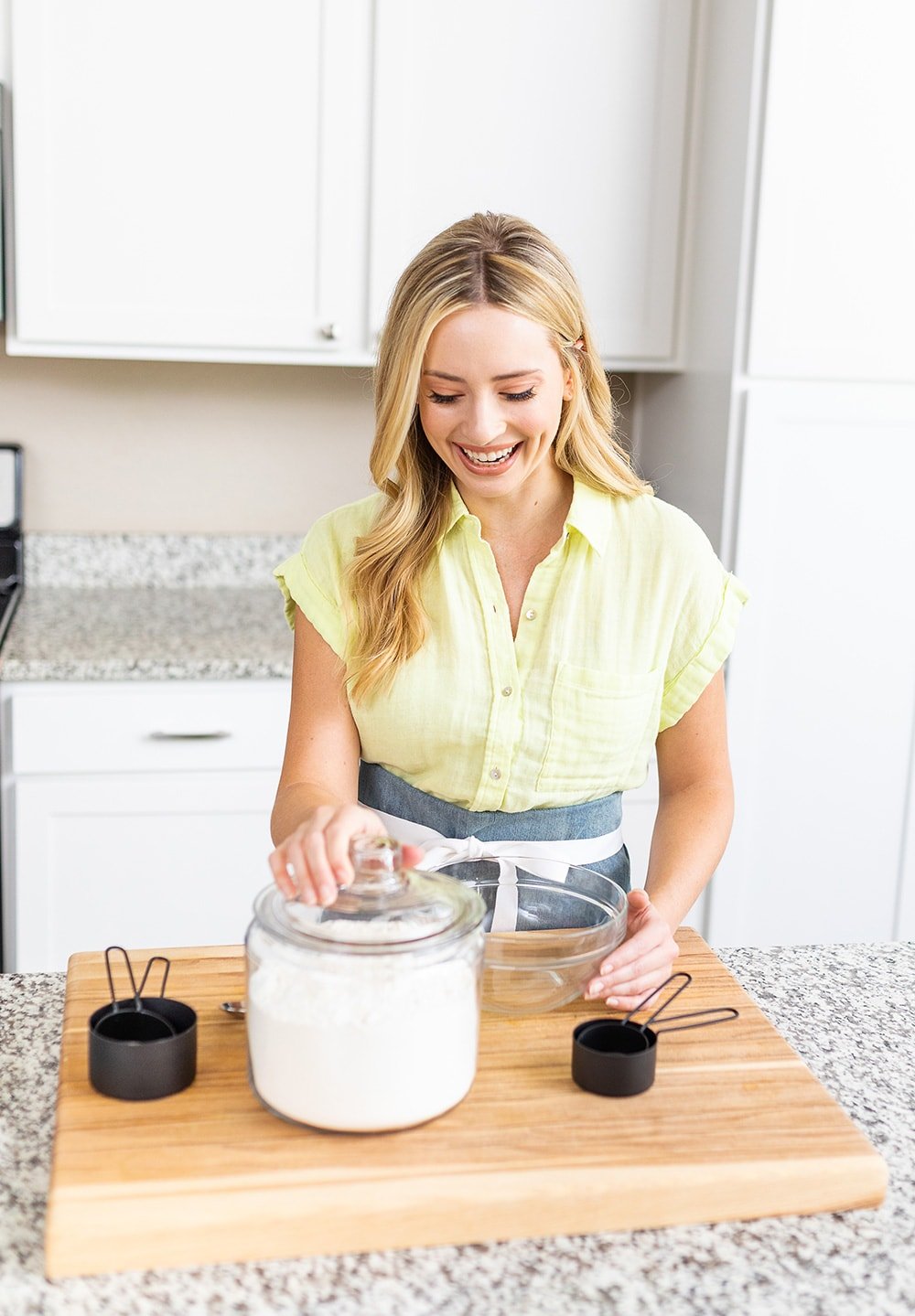
How you measure your baking ingredients can make or break your success in the kitchen.
It’s actually kind of crazy just how critical this one step can be! I see so many frustrated comments and messages from readers asking what could have gone wrong when a recipe doesn’t turn out. Most of the time, it’s due to measuring issues.
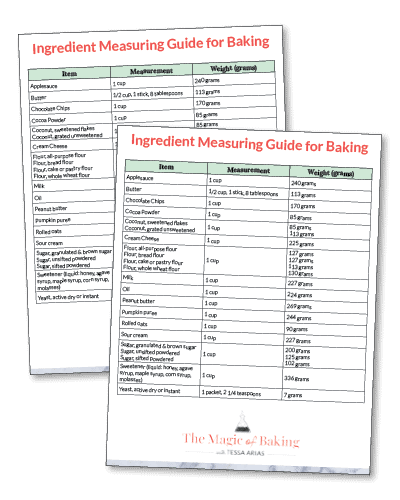
Free Ingredient Measuring Guide!
The key to consistent baking success is a click away. Sign up to get instant access to my printable Ingredient Measuring Guide now!
The easiest ingredient to mismeasure is flour. That’s because it can be so easily compacted into a container or measuring cup without realizing.
Other ingredients can be mismeasured, too, but flour is the most commonly mismeasured – and the results can be disastrous. Accidentally adding more flour than the recipe calls for can yield baking results that are:
- Dry (instead of moist)
- Dense (instead of light and fluffy)
- Crumbly (instead of moist, chewy, or fudgy)
- Tough (instead of tender)
- Rubbery (instead of delicate)
Basically, results that no one wants!
Luckily with a few simple tricks, it’s easy to improve your baking by learning how to measure your flour correctly. I’ve laid it all out in the video and instructions below. If you follow these guidelines every time you bake a recipe, you’ll see much more consistent results.

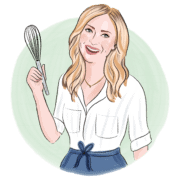
Sprinkle of Science
How to Measure Flour Correctly
Why is it Important to Measure Flour Correctly?
The cookies below were made using the exact same recipe – but the cookie on the left was made by measuring flour with a scale, and the cookie on the right was made with compacted cups of flour. The cup-measured cookies ended up being dry and tough, and hardly spread while baking:
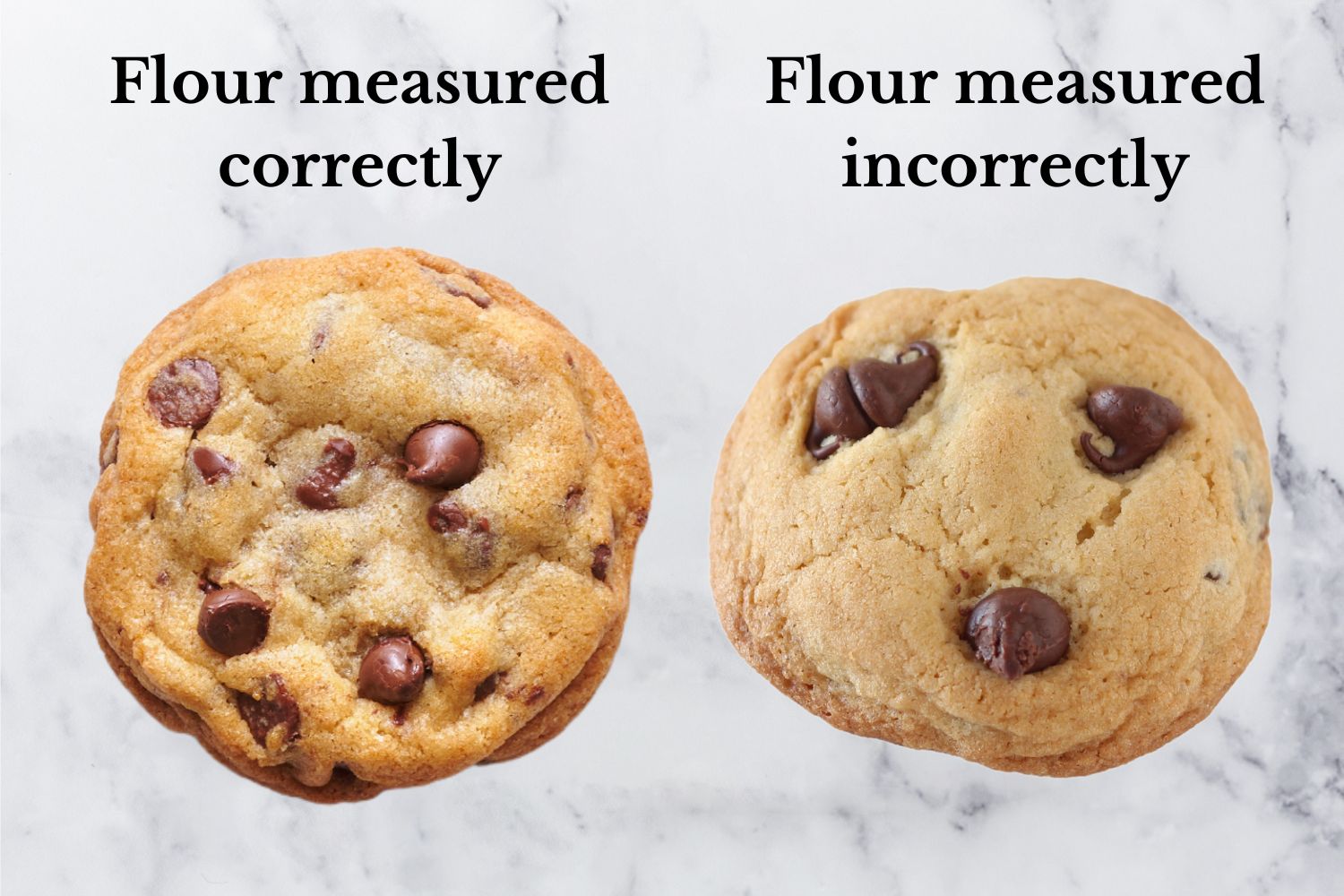
Fluff Your Flour
The first step to measuring flour is to fluff up your flour in its container or bag. Simply take a spoon or fork and fluff the flour around to loosen it up.
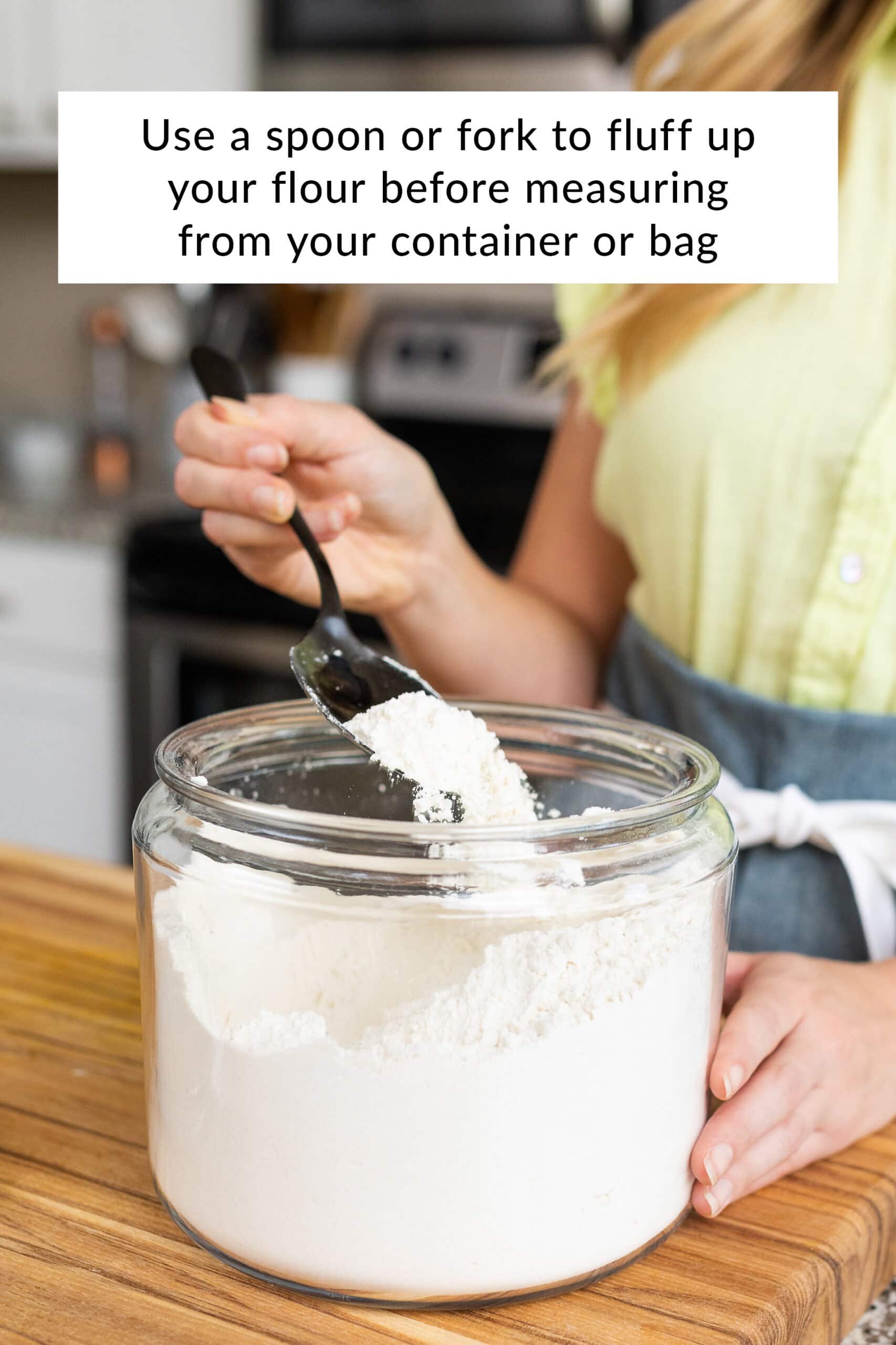
Measuring with a Scale
Measuring with a digital kitchen scale is the best and simplest way to improve your baking. Measuring with a scale gives you 100% accuracy. It also dirties fewer dishes because you aren’t using a bunch of measuring cups.
This is my favorite scale by OXO. This one is a cheaper alternative I also like.
How to Measure Flour with a Scale
- Use a spoon or fork to fluff up your flour before measuring. Flour easily settles and compacts into its container, which can make it easy to add too much to your recipe.
- Place a large bowl on top of a digital scale. Press the zero / tare button on the scale to return the weight to zero before weighing your flour.
- Spoon flour into the bowl until you reach the required amount.
- Press the zero / tare button to return the weight to zero before adding each new ingredient.
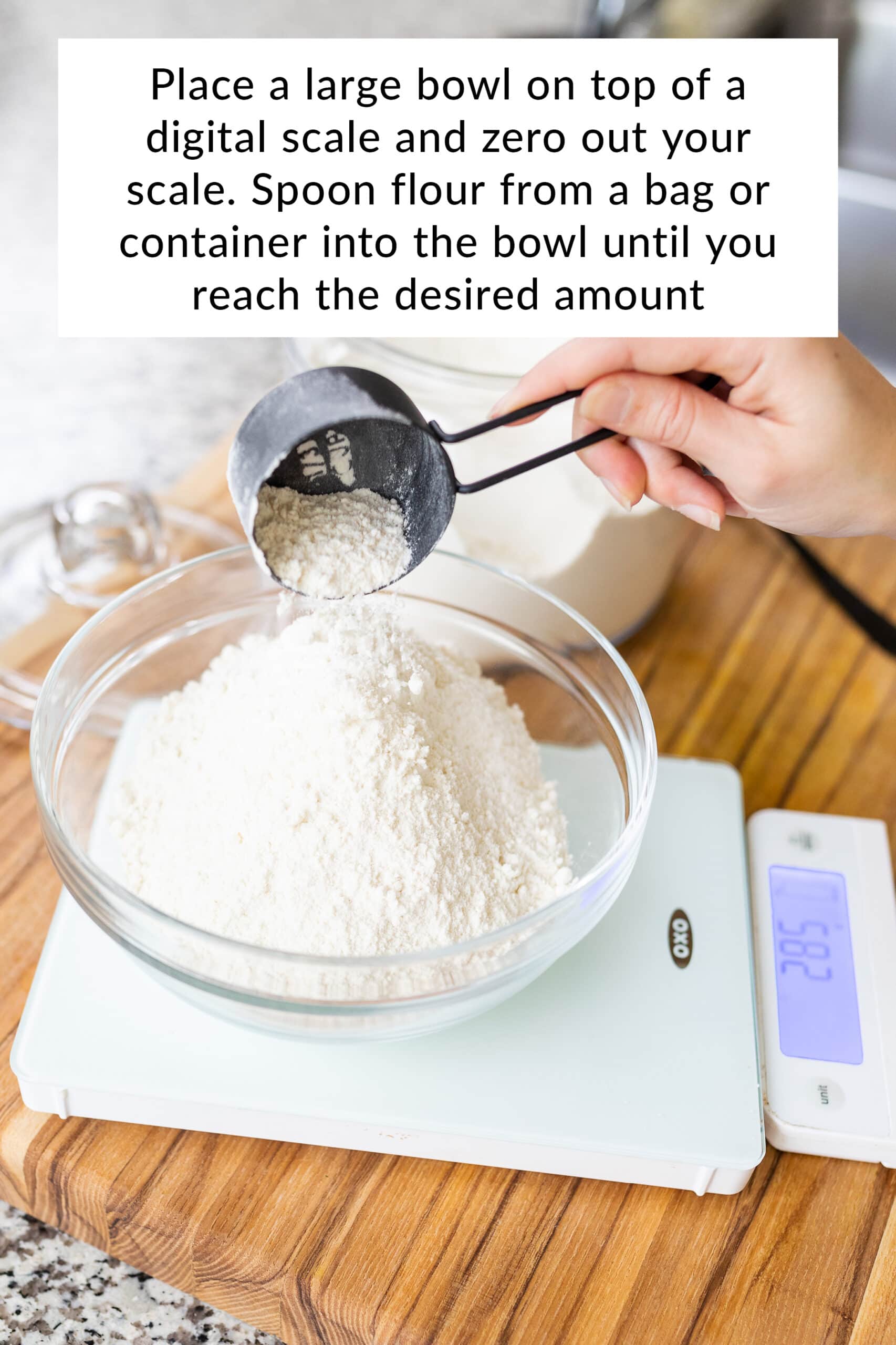
Note: Different Ingredients Weigh Different Amounts
- 1 cup of every ingredient will NOT weigh 8 ounces, as different ingredients have different densities.
- If that’s confusing, think of it like this: 1 cup of rocks would not weigh the same as 1 cup of feathers.
- The majority of my baking recipes here on Handle the Heat include weight measurements in grams. I find grams to be the easiest unit to work with.
- You can also download my handy printable Ingredient Measuring Guide, so you can measure in grams even if a recipe lists only in volume!
If You Don’t Have a Scale, Use The Spoon & Level Method
If you don’t have a kitchen scale, the ‘spoon and level’ method is the second best way to measure flour. Though not as precise as a scale, the spoon and level method helps to ensure you don’t accidentally compact too much flour into your measuring cup.
How to Measure Flour with the Spoon & Level Method
- Use a spoon or fork to fluff up your flour before measuring.
- Spoon the flour into your measuring cup until you have a tall mound. Do not place a measuring cup directly into your flour bag or container (more on this below).
- Use the flat edge of a knife to scrape the excess flour back into the container.
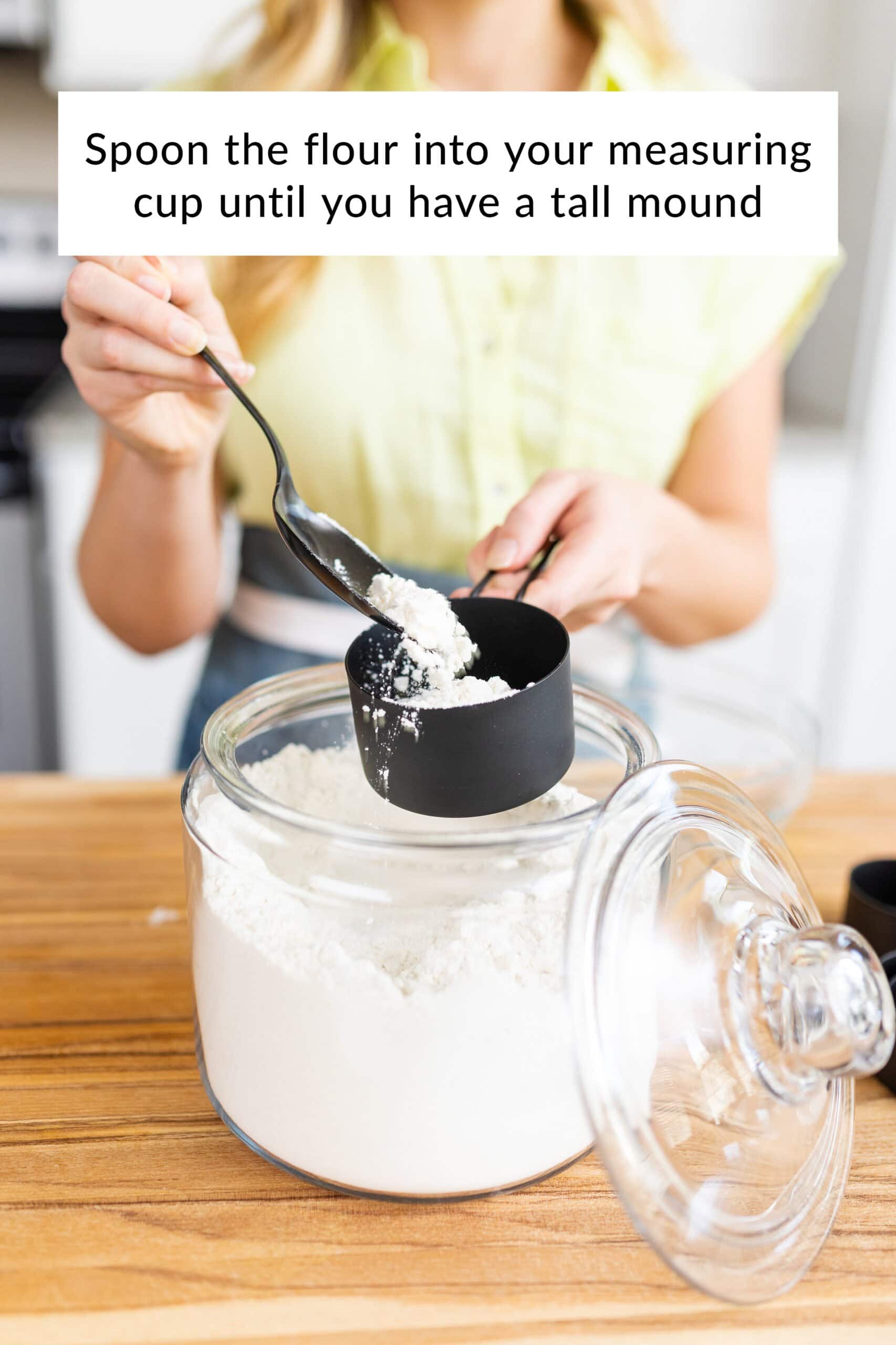
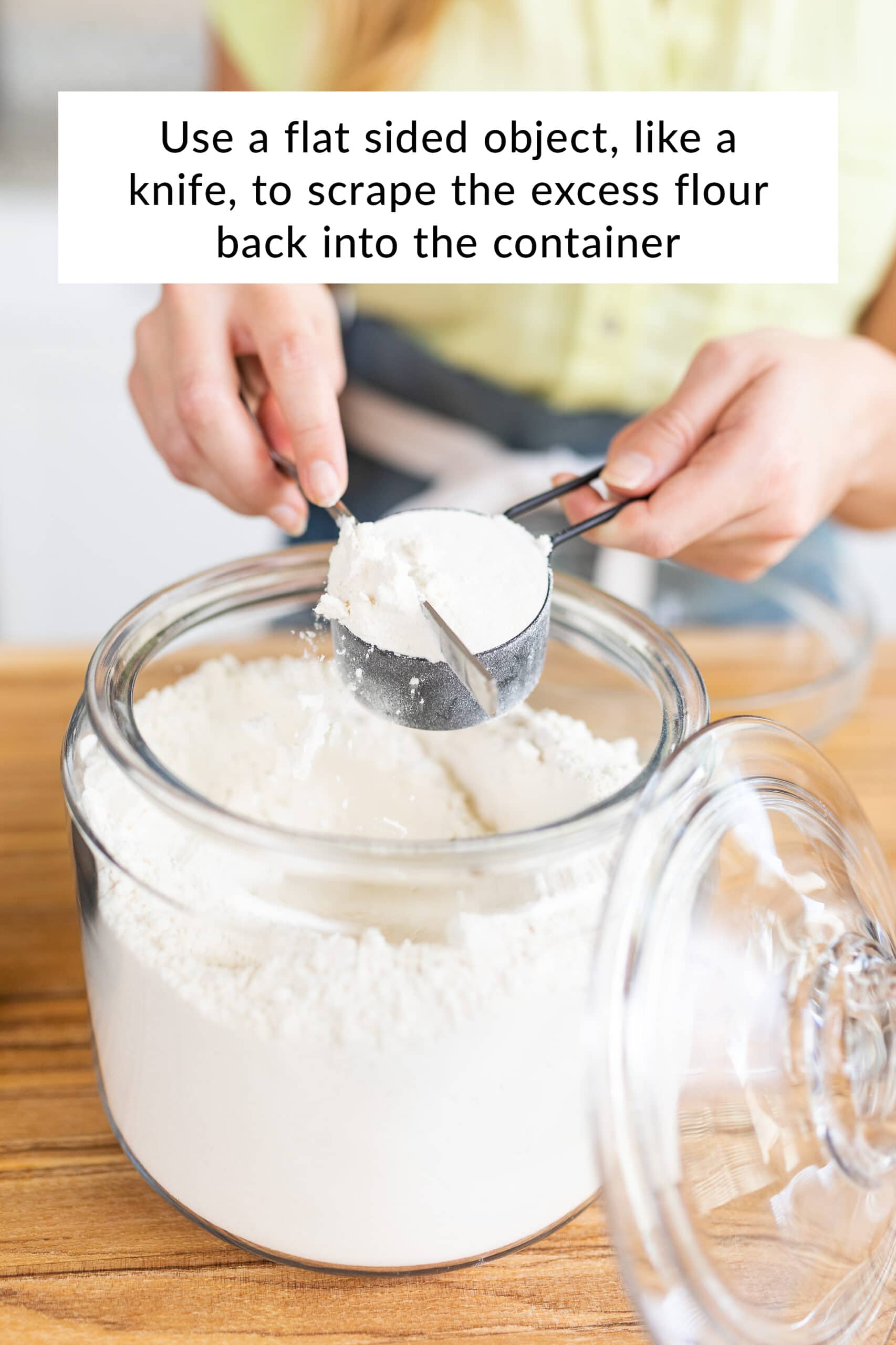
Never Scoop Directly From Your Flour Container!
Never place a measuring cup directly into your flour bag or container, as this will pack too much flour into your measuring cup.
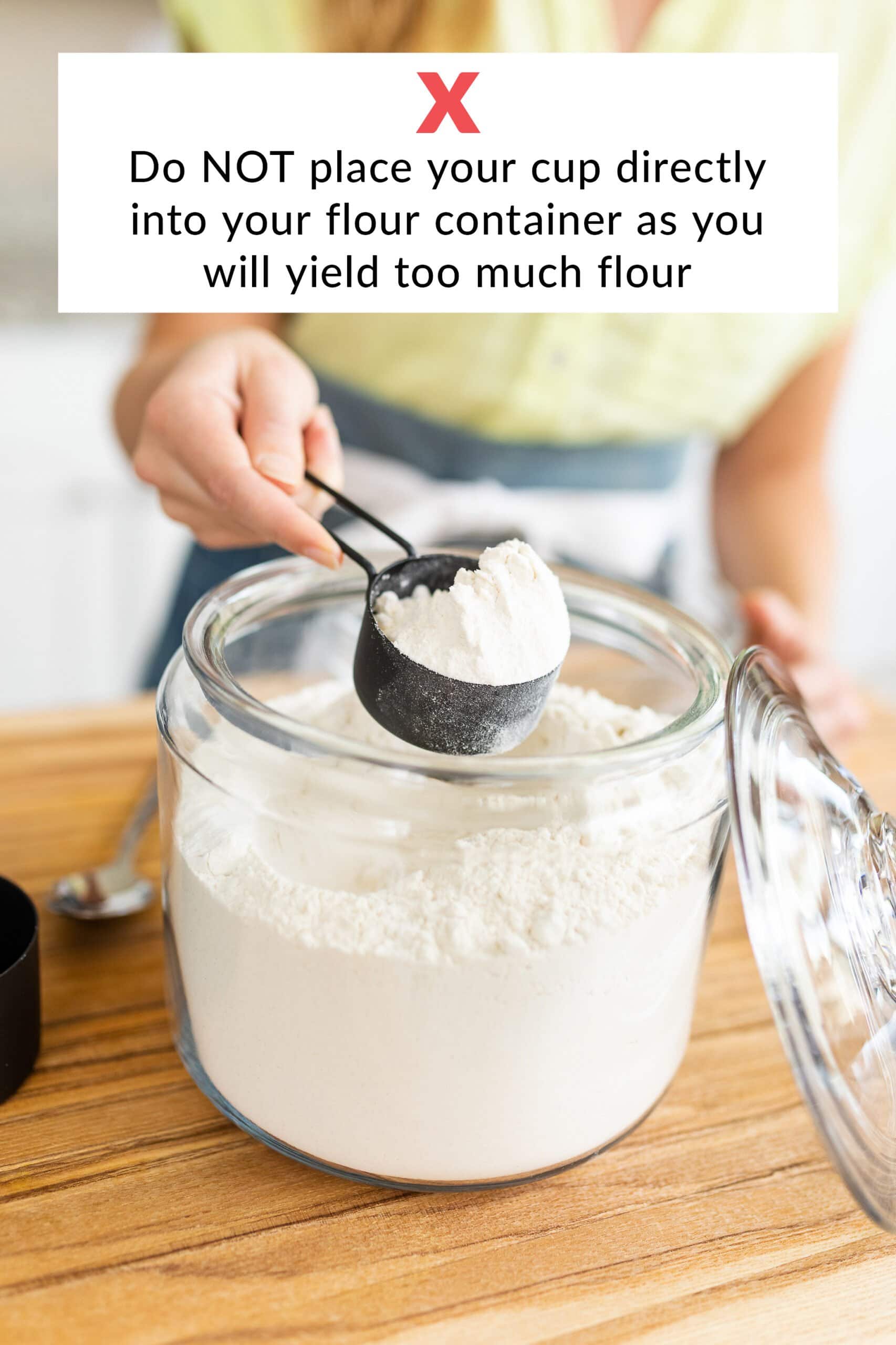
Do you Measure Flour Before or After Sifting?
Whether to measure flour before or after sifting depends on how the ingredient is called for in the recipe. For example, if the recipe calls for “1 cup flour, sifted,” measure the flour first and then sift. If a recipe calls for “1 cup sifted flour,” sift the flour first, then measure.
Recipes You’ll Love:
Now that you’ve learned one of the most crucial steps in baking, make sure to check out some of my top recipes!
Photos by Lauren Peachie.
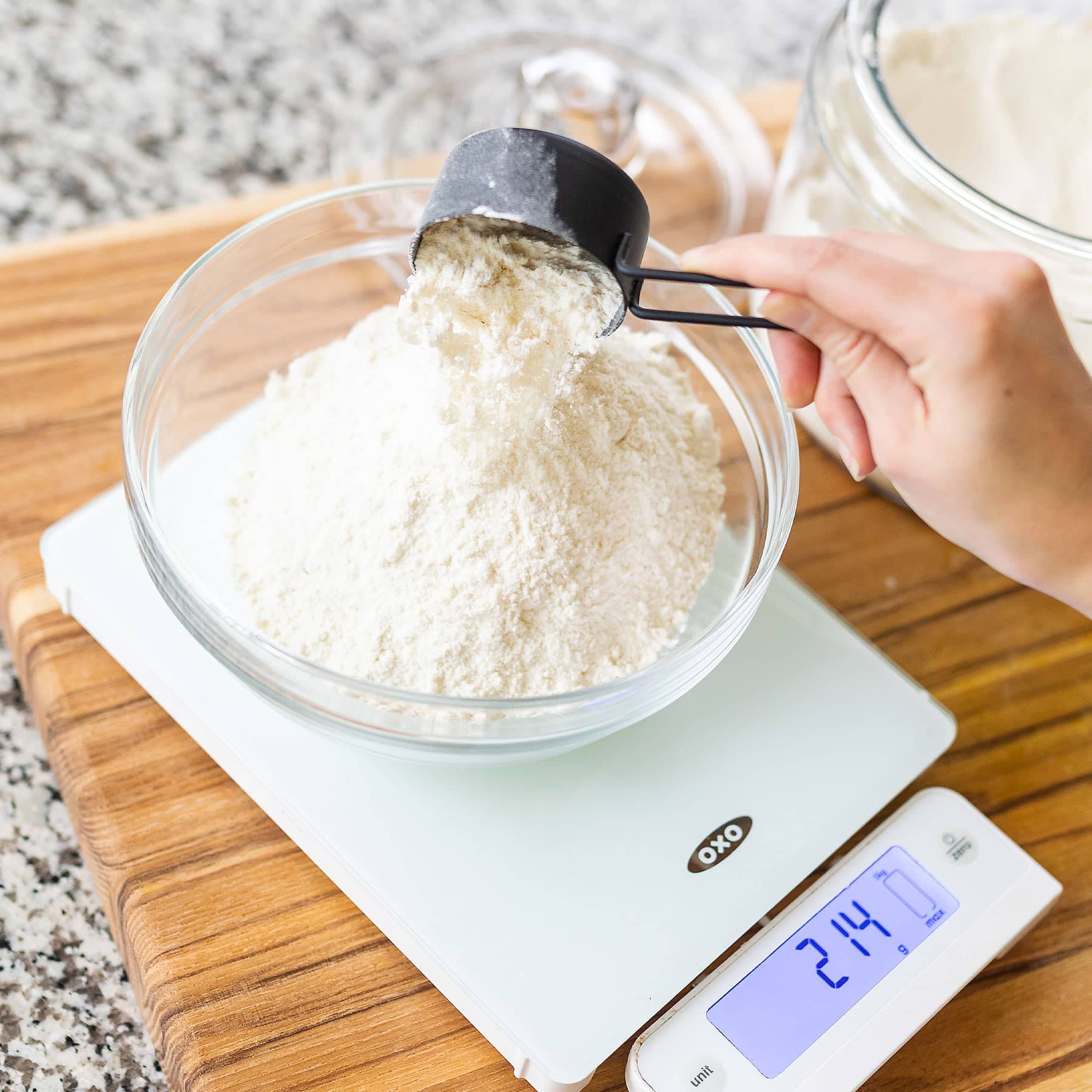
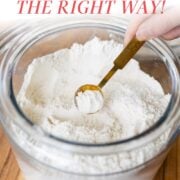
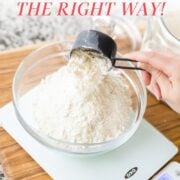
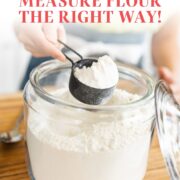
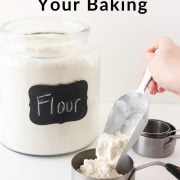
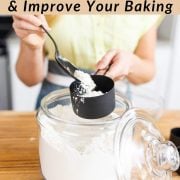

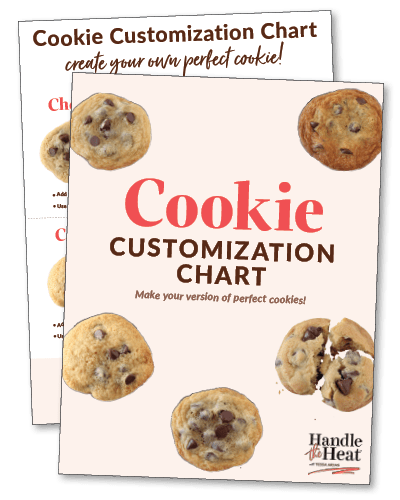
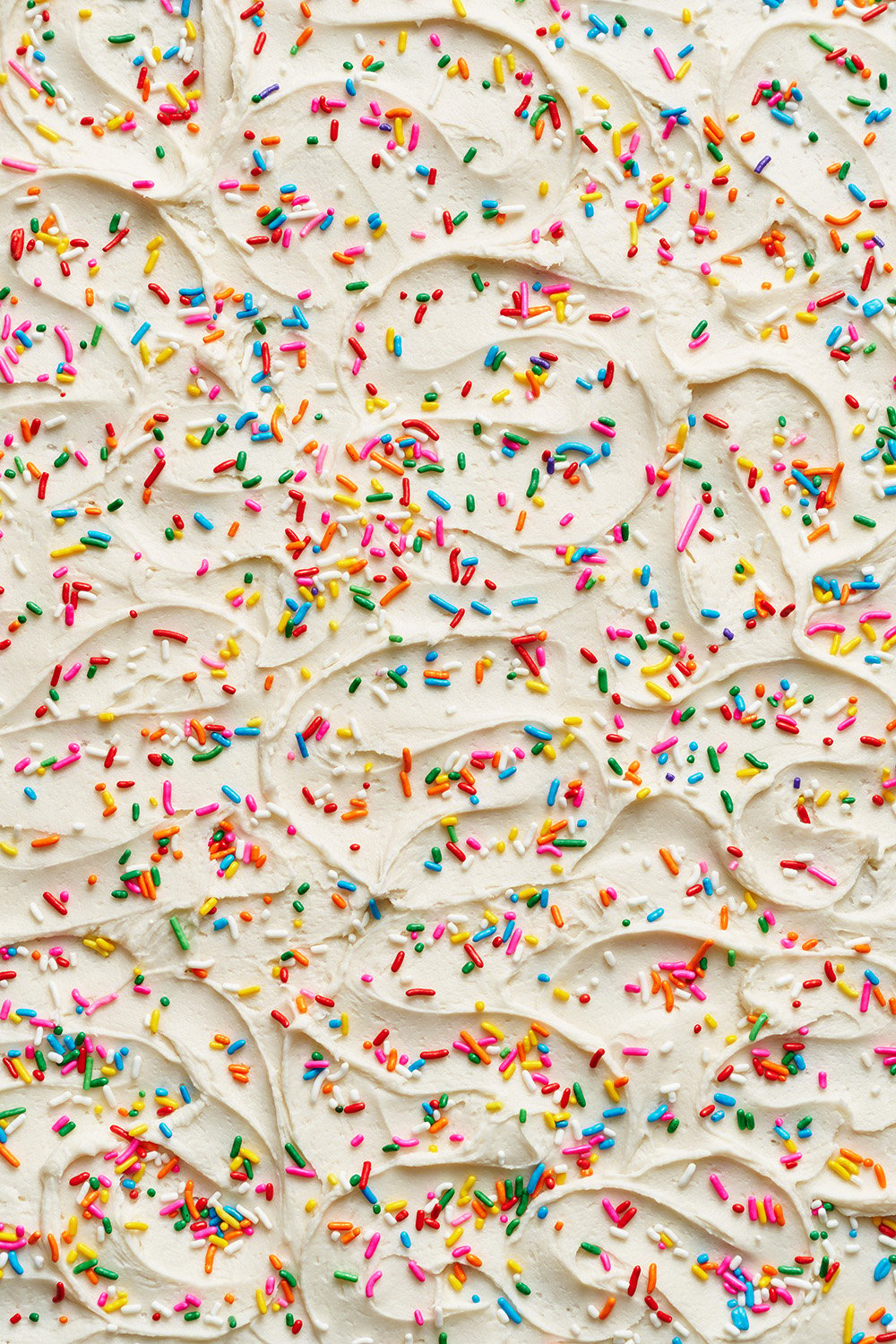
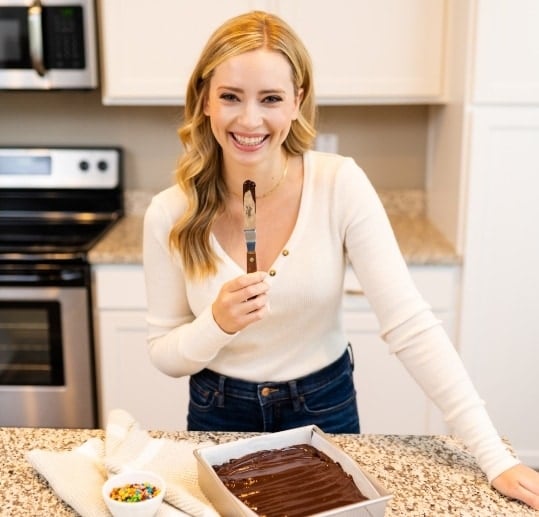
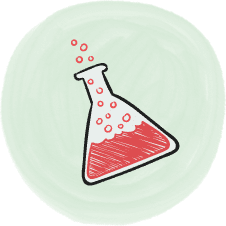
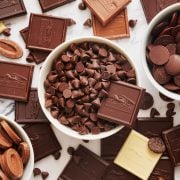
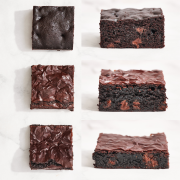
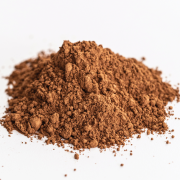
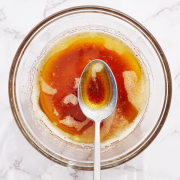
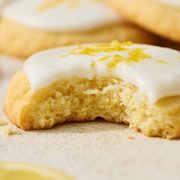
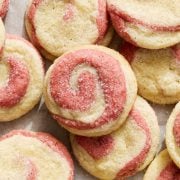
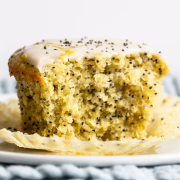
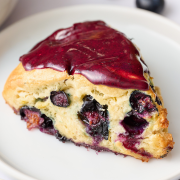








Hi Tessa,
Being a baker in the UK, I find recipes that use the cups measuring system hard to convert into grams successfully. My baking always fails one way or another.
There are some amazing American recipes that I’d like to try, but with previous fails, I’m unwilling to waste ingredients and money.
Is there a foolproof conversation chart anywhere that I can download?
I always use a scale in my kitchen.
Thank you for your emails, I find them really informative
Kindest regards
Deborah
Lancashire UK
Good question. I’ve found that when I look up conversion charts, some differ, even if only by a few grams. For example, I saw one that said flour was 128 grams, and another said it was 125 grams.
I find it so irritating when so called professionals, (Martha, Ina) dig their measuring cup in the flour. Such poor technique to exhibit and getting paid to do so.
Hello Tessa!! Thanks for your tips! I don’t received the guide of measures in my mail 🙁
Get video on how to measure flour.
I learned that at king Arthur when I took my first course.
Ted
Do you ever use a sifter to measure the flour?
LOVE YOUR TIPS AND VIDEOS!
The cookie on the left looks a bit too spread out and flat, IMO. And maybe like the butter was too soft. Is that the cookie you’re saying is best, or just different because the flour has been weighed? I prefer something more like the one on the right.
Great info Tessa and it is always a pleasure listening to you explaining things. Question I have: I made cinnamon buns and froze the unbaked dough. When I wanted to transport them into a box there was liquid sugar on the bottom of the baking tray. How do I prevent that from happening as that is all the good stuff that should stay in between the layers!!
Hope you can help,
Tilly
I have found that pre-sifting flour is a good idea before measuring for a recipe. It works great for my chocolate chip
cookies!
Hi, I’m super excited to have found this blog post. It’s so helpful and I have signed up for the free ingredients chart. I haven’t gotten it yet but I look forward to seeing it in my inbox 🙂
This dish I tried. Very delicious and nutritious. I like it.
I used to wonder why I would ever want to weight my flour when I could quickly scoop some out. lol. Because of your site I always weigh my ingredients now! Thanks so much for sharing your knowledge.
a guide, thank you, some of these I’ve forgotten and some I never knew, and I’m sure both forgotten and unknown factors have contributed to my baking “issues”